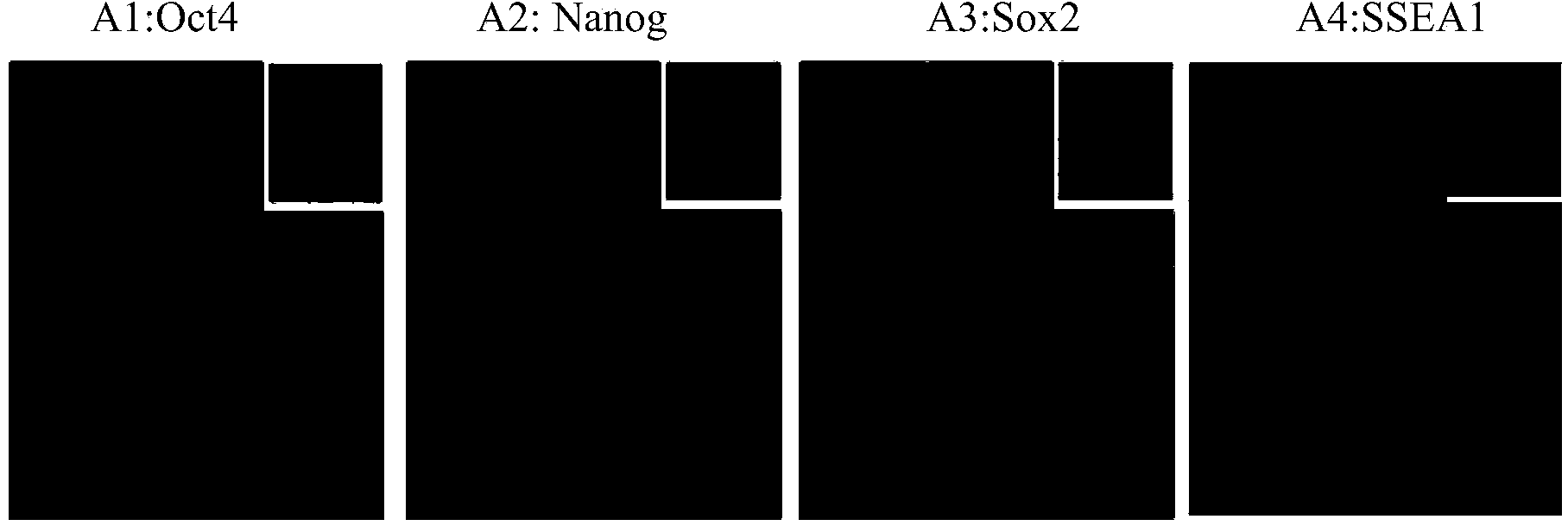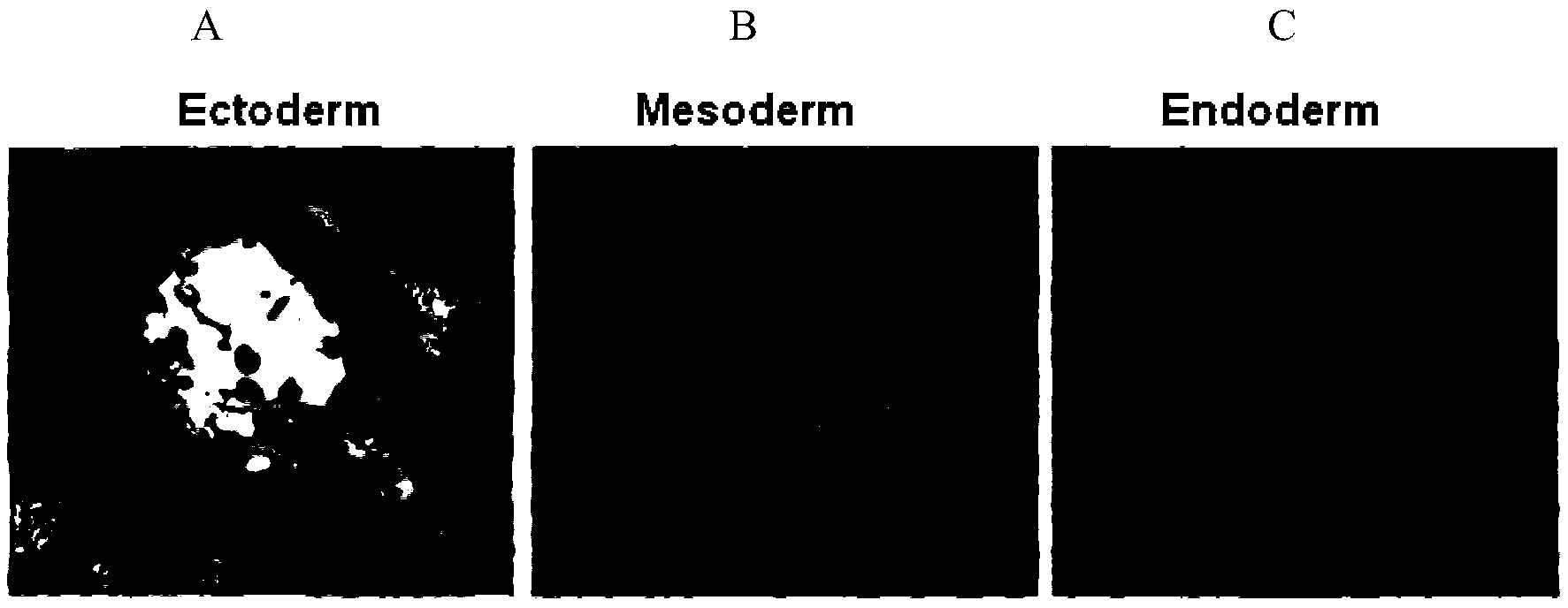Method for inhibiting PUMA function and improving iPS (induced Pluripotent Stem) cell construction effect
A cellular and functional technology, applied in the field of stem cells, which can solve problems such as the role of genome stability and the unclear molecular mechanism.
- Summary
- Abstract
- Description
- Claims
- Application Information
AI Technical Summary
Problems solved by technology
Method used
Image
Examples
Embodiment 1
[0040] Example 1 PUMA - / - Preparation, passage and cryopreservation of MEFs from mouse embryonic fibroblasts
[0041] (1) Take 8-10 weeks of PUMA - / - Mice were caged together in the evening at a ratio of 2:1 male to female, and the female mice found to have vaginal plugs were reared in single cages the next morning, and 0.5 days of embryonic development at noon was recorded as E0.5 or 0.5dpc; mouse embryos were autoclaved the day before Bacteria tweezers and scissors.
[0042] (2) Execute the pregnant mice with a pregnancy period of 13.5 days (E13.5), soak the mice in 75% alcohol, put them in a sterile ultra-clean table, cut the peritoneal cavity of the sacrificed pregnant mice with large scissors , Take out the uterus on both sides, and put the uterus in a sterile 100mm plastic petri dish with a lid.
[0043] (3) Put the removed uterus into sterile PBS and count the number of embryos.
[0044] (4) Remove the mouse embryos from the uterus step by step: remove the uterus fi...
Embodiment 2DH5
[0056] Example 2 DH5α Escherichia coli strain transformed with plasmids PMX-Oct4, PMX-Sox2, PMX-c-Myc, PMX-KLF4, and carried out small plasmid extraction and large plasmid extraction
[0057] LB medium: yeast extract 5g, tryptone 10g, NaCl 10g, dissolved in 900ml H 2 In O, adjust the pH to 7.2-7.4, add water to make up to 1L, and store under high temperature and high pressure sterilization.
[0058] LB solid medium: 5g of yeast extract, 10g of tryptone, 10g of NaCl, 15g of agar, add water to 1L, sterilize under high temperature and high pressure, lower the temperature to about 50°C, add antibiotics, pour into 100mm dish, 20ml / dish, cool and solidify Store at 4°C.
[0059] Antibiotics: Ampicillin was formulated into 100mg / mL (1000×) ampicillin (Amp) solution and stored at -20°C.
[0060] DH5α E. coli strain was purchased from Takara.
[0061] Plasmids: PMX-Oct4, PMX-Sox2, PMX-c-Myc, PMX-KLF4 were purchased from addgene.
[0062] 2.1 Bacterial Transformation Steps
[0063] (1...
Embodiment 3
[0097] Packaging, titer determination and freezing storage of embodiment 3 retroviruses
[0098] 3.1 Production of retroviruses
[0099] (1) Resuscitate Plat-E cells in a water bath at 40°C. After resuscitation, place the cells at 37°C, 5% CO 2 Cultured in an incubator, when the confluence reached 70-80%, subcultured at 1:3.
[0100] (2) Digest and count the Plat-E cells in the logarithmic growth phase. (When the confluence of Plat-E cells in a T75 flask reaches 80-90%, they can be transferred to two 100mm dishes).
[0101] (3) 8x10 per 100mm dish 6 -1x10 7 Seed the cells.
[0102] (4) Around 17-20 hours, observe whether the cell confluence reaches 90%.
[0103] (5) Replace the cell culture medium in the culture dish with 5ml fresh DMEM+10%FBS.
[0104] (6) The ratio of plasmid and lipofectamine2000 mixture (per 100mm dish) is as follows:
[0105] a) 10μl lipofectamine2000+500μl OPTI-MEM, place at room temperature for 5min;
[0106] b) 10 μg of the target plasmid (PMX...
PUM
 Login to View More
Login to View More Abstract
Description
Claims
Application Information
 Login to View More
Login to View More - R&D
- Intellectual Property
- Life Sciences
- Materials
- Tech Scout
- Unparalleled Data Quality
- Higher Quality Content
- 60% Fewer Hallucinations
Browse by: Latest US Patents, China's latest patents, Technical Efficacy Thesaurus, Application Domain, Technology Topic, Popular Technical Reports.
© 2025 PatSnap. All rights reserved.Legal|Privacy policy|Modern Slavery Act Transparency Statement|Sitemap|About US| Contact US: help@patsnap.com



